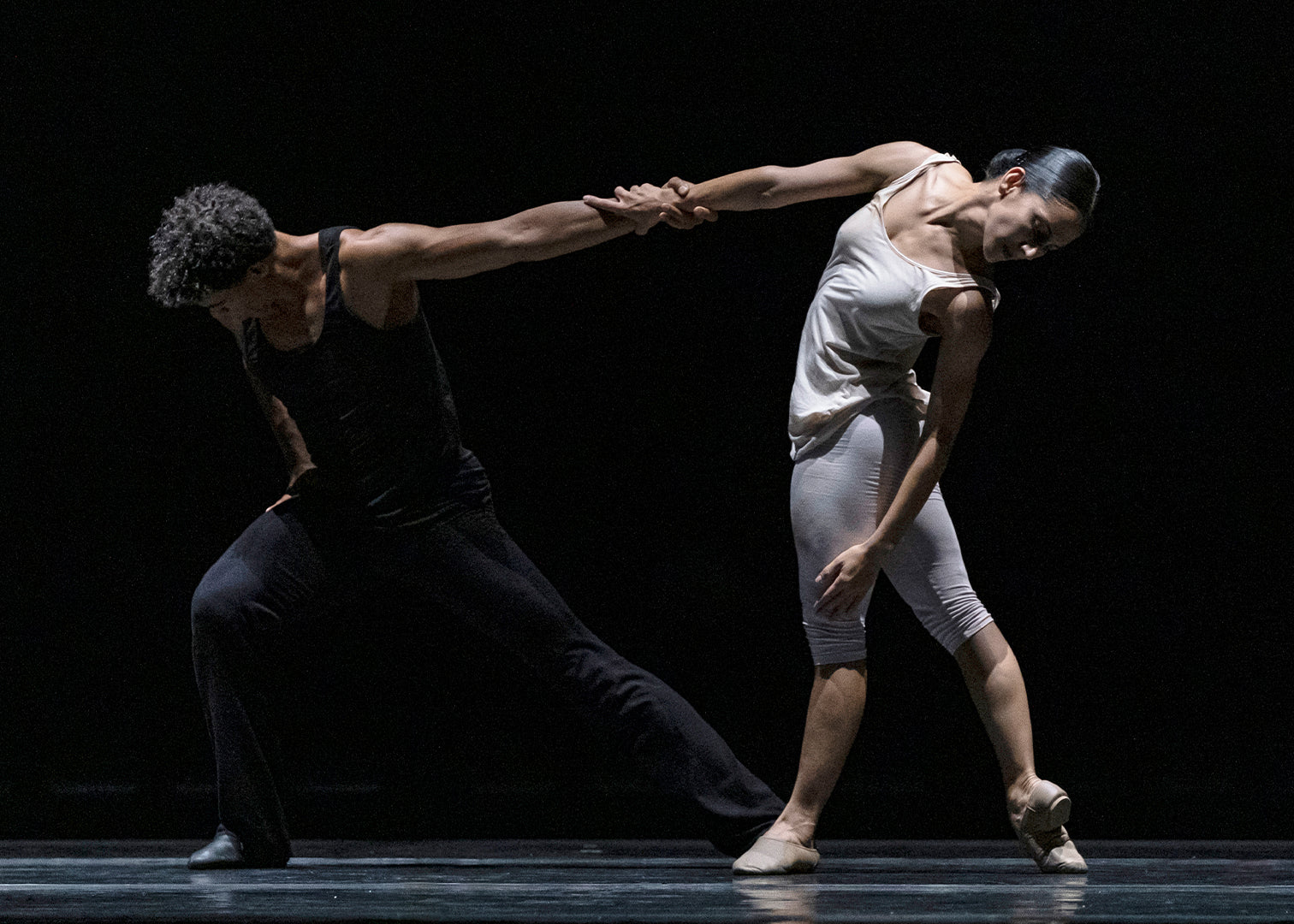“Ink” offers the audience an experience of the spectrum of blackness without being didactic or sentimental. Seated beneath two collages (by David L. Arsenault) depicting images of what could be ancestors, Brown’s opening solo serves as a thesis (as they do in the first two instalments).
She morphs from a washer to conjuring woman,
wringing out what would be clothes, to stirring a huge pot of stew or brew;
from DJ to queen, scratching on the “ones and twos” and placing a crown on her
head. She travels a timeline that charts the journey through the iterations and
personas of the “African American” and that of her trilogy. She is clearing the
space, setting the table for the final act.
What unfolds is a parade of the beautiful diverse spectrum that is blackness. It is abundantly clear both from the content of her work, and the post-performance conversations that follow each of her shows, Brown in on a mission to make commonplace aspects of the black experience that are seldom held up, i.e. our humanity, the parts that love, laugh, strive and through adversity thrive. This is the tender underbelly of blackness and the culture that is seldom seen or acknowledged by mainstream culture. Yet Brown presents it as she experiences—a matter of fact, as the norm, because it is. Though her work is rooted in social dance, infused with African and modern vernacular, and is highly gestural, it manages to be authentic and natural, too. Her dancers are at once performing yet simply being.
Balance, the first duet danced—behaved—virtuosically by Yusha-Marie Sorzano and Maleek Washington is perfectly crafted, and takes us inside “black love” covering the emotional terrain of tenderness, teasing, filtration and the affectionate grooming that indicates you are my person. It rides the alternating power shifts of togetherness. One of the most adroitly choreographed and poignant moments has the couple as if in bed, they cuddle, entwine shift positions . . . this is life, this is us.
Washington’s duet with Timothy Edwards-Turf is the male counterpart to Brown’s “Black Girl.” Here, the black male who is typically reduced to his body and the threat it imposes is humanized. We watch the two grow up before our eyes, from the wide-eyed innocence of youth to becoming men. As the duet progresses and they age, their male bodies are now to be feared, resulting in their subjugation and abuse. My mind automatically imagined the abusers to be the police, however in truth, metaphorically it could be any number of things; the judicial system, academia or just a black man barbecuing in a public park. Brown’s humanization of these two black male bodies makes them people to us, hence when they are struck down empathy rises, not the default suspicion of “well, what did they do?”
With the black body she has written adjectives that are seldom associated with it—tender, vulnerable, loving, sensuous, joyous, and free.
Brown has managed to take the sentiment of black filmography and the R&B song book of the ’90s and choreograph it for the stage. In the ’90s there was a surge in black creativity akin to the one we are experiencing now: in literature, Toni Morrison, Alice Walker were in full bloom, and Terry McMillan emerging; in media, Vibe and The Source were born. Black cinema was blowing up, and the depiction of black experiences and relationships was abundant—Love and Basketball, Love Jones, Soul Food, every Spike Lee Joint. What Russell Simmons, André Harrell and Puffy were doing with music became the soundscapes of our lives, Mary J. Blige, Faith, TLC, and Lauryn Hill (whose award-winning album The Miseducation of Lauryn Hill inspired this work).
With “ink” Brown has choreographed the diversity of blackness, with the black body she has written adjectives that are seldom associated with it—tender, vulnerable, loving, sensuous (not vulgar), joyous, and free. Brown’s trilogy takes us from the grotesqueness and depravity that African peoples and their images have suffered to the endurance and ingenuity that Brown says makes “Black people superheros.” As Maya Angelou wrote, “And still I rise.” “Ink” is a love sonnet that says “I see you, I will not forget you, I honor you, and I got you.”









comments